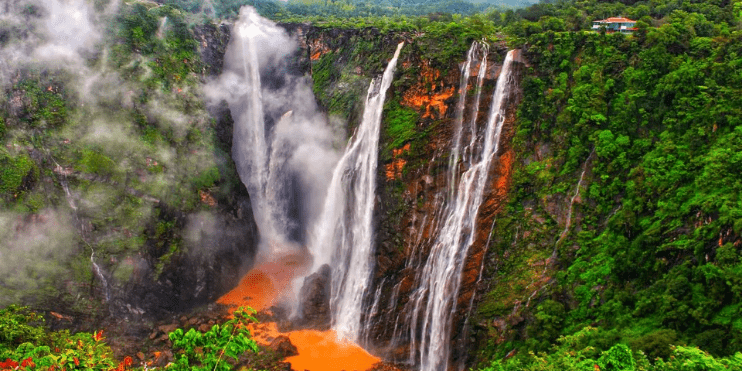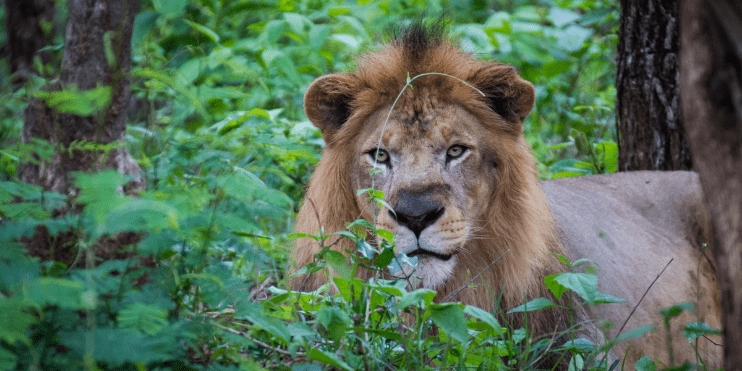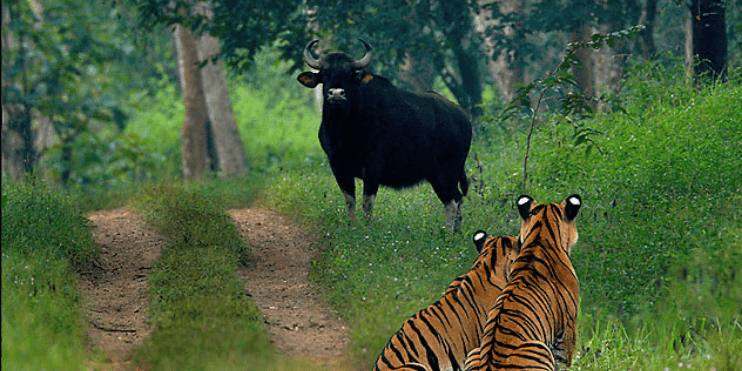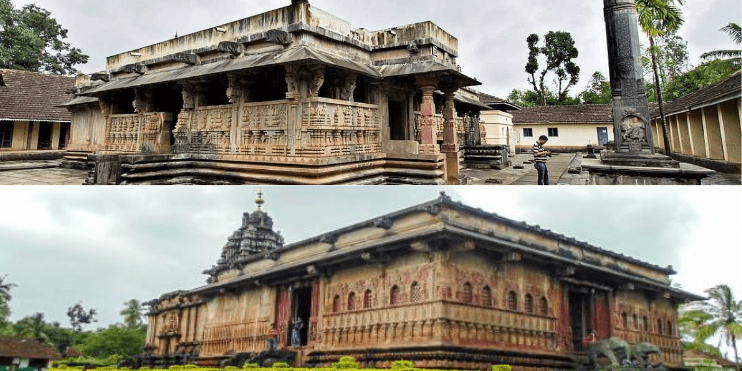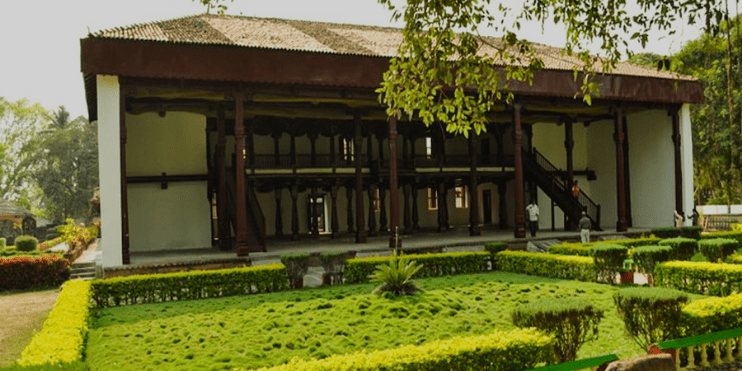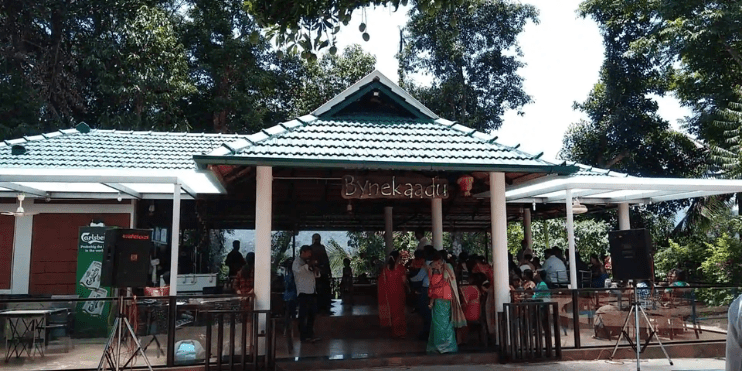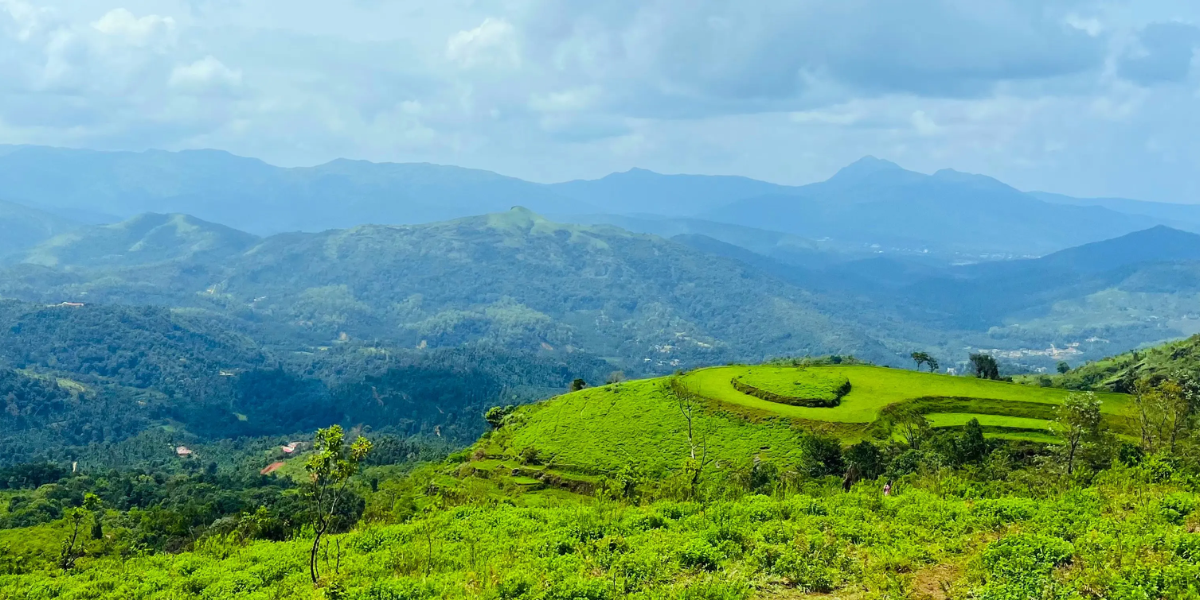Imagine yourself perched atop a verdant peak, mist swirling around you as you gaze across an endless expanse of emerald valleys. The crisp mountain air carries the whispers of ancient forests, and a symphony of birdsong fills the silence. This is Kodachadri Hill, a jewel nestled in the heart of the Western Ghats, beckoning you to embark on an unforgettable adventure.
Rising majestically to 1,343 meters (4,406 feet) above sea level, Kodachadri reigns supreme as the highest peak in the Shimoga district of Karnataka. Its name, derived from the Sanskrit word “Kutaja,” meaning “Jasmine of the Hills,” hints at the fragrant beauty that awaits. More than just a physical landmark, Kodachadri holds a deep significance and is revered as a sacred abode. Legend speaks of Adi Shankaracharya scaling its treacherous slopes to establish the Mookambika Temple at its summit, adding a touch of mysticism to the air.
But Kodachadri’s true magic lies in its diverse tapestry of experiences. For the intrepid explorer, there are challenging trekking trails that wind through dense forests and past cascading waterfalls like the mesmerizing Hidlumane Falls. Nature lovers will revel in the symphony of biodiversity, spotting rare birds flitting through the canopy or exotic orchids clinging to moss-covered rocks. Seekers of serenity can find solace in ancient temples like the Sarvagna Peetha, where the chanting of mantras fills the air.
Whether you’re a seasoned trekker, a nature enthusiast, or simply a soul yearning for a breath of fresh air, Kodachadri Hill has something for you. So, pack your bags, lace up your boots, and prepare to be captivated by the enchanting beauty of this hidden gem in the Western Ghats.
Exploring the Beauty of Kodachadri

“The Kodachadri Peak Trek was more than just a physical challenge,” says an avid hiker. “It was a journey of self-discovery, surrounded by breathtaking beauty. The feeling of reaching the peak, watching the sunrise paint the valleys gold, was simply magical.”
Trekking Paradise:

Kodachadri Hill is a playground for trekkers of all levels. For the seasoned adventurer, the Kodachadri trek offers a challenging 12km ascent through dense forests and stunning viewpoints. Witness the breathtaking sunrise from the peak, often shrouded in mist, and feel the sense of accomplishment wash over you.
For those seeking a more moderate journey, the Gundya Mane Trek offers a shorter 6km route with equally captivating sights. Hike alongside cascading streams, spot colorful birds, and reach the serene Gundya Mane temple nestled amidst the greenery.
Pro Tip: Pack sturdy shoes, comfortable clothes, and plenty of water. The best time for the Kodachadri trek is during the dry season (October to May) when the trails are clear and the weather pleasant. Remember, safety comes first! Always inform the forest officials before starting your trek, and stick to designated paths.
Cascading Waterfalls:

After a challenging Kodachadri trek, what better way to cool down than with a refreshing dip? Kodachadri boasts two stunning waterfalls that beckon you in. The Hidlumane Falls cascades down a 300-meter cliff, creating a mesmerizing plunge pool perfect for a swim. Legend has it that these falls were created by Bhima, one of the Pandava brothers, to quench his thirst during his exile.
Further down the trail, the Agumbe Falls tumbles down a series of rocky steps, creating a cascading wonderland. Lush foliage surrounds the falls, creating a picture-perfect backdrop for your adventure memories.
Tranquil Temples:

Kodachadri’s spiritual aura is evident in its ancient temples. Climb the 1,000 steps to reach the Sarvagna Peetha, a temple dating back to the 12th century. The intricate architecture and serene atmosphere offer a moment of peace amidst the natural beauty.
At the summit of the peak stands the Mookambika Temple, dedicated to Goddess Parvati. Soak in the panoramic views and witness the unique “Sarva Darshan” ritual, where the deity’s idol is turned towards all four directions.
Nature’s Embrace:

Kodachadri Hill is a haven for nature enthusiasts. The Western Ghats come alive with over 500 species of birds, including the elusive Malabar Whistling Thrush and the vibrant Great Hornbill. Keep your eyes peeled for colorful butterflies, playful monkeys swinging through the trees, and unique orchids adorning the forest floor.
Remember: Responsible tourism is key to preserving this ecological paradise. Avoid littering, stick to designated paths, and respect the local flora and fauna. Together, we can ensure that Kodachadri’s beauty continues to enchant generations to come.
Exploring the Surroundings Of Kodachadri
Kodachadri, while mesmerizing on its own, serves as the perfect gateway to further exploration. Venture beyond the hill and discover the hidden gems nestled in its vicinity:

– Kollur Mookambika Temple: This ancient temple, dedicated to Goddess Parvati, shares a deep connection with the one on Kodachadri’s peak. Immerse yourself in the spiritual atmosphere and witness the unique “Sarva Darshan” ritual. Just 37 kilometers away, it’s a convenient day trip.

– Jog Falls: Witness the power and grandeur of India’s highest waterfall, a mere 100 kilometers from Kodachadri. The cascading waters plunging 253 meters create a breathtaking spectacle, especially during the monsoon season.

– Agumbe Rainforest Research Station: Delve into the fascinating world of the Western Ghats ecosystem at this research station, which is 25 kilometers away. Spot rare species of flora and fauna, learn about conservation efforts, and enjoy guided nature walks.
Beyond Day Trips:
For those seeking an extended adventure, consider combining Kodachadri with other nearby destinations:
– Mangalore (110 km): Explore the vibrant coastal city, indulge in delicious seafood, and soak up the sun on pristine beaches.
– Udupi (130 km): Immerse yourself in the rich cultural heritage and savor the unique vegetarian cuisine of this temple town.
– Maravanthe Beach (140 km): Witness the mesmerizing natural phenomenon of a beach merging with a river, creating a breathtaking sight.
Planning Your Kodachadri Trip:

Getting to Kodachadri is convenient. Shimoga, the nearest major city, is well-connected by air, rail, and road. From there, local buses or taxis can take you to the base of the hill.
Accommodation in Kodachadri ranges from budget-friendly homestays to luxurious resorts. Popular choices for the Kodachadri homestay are Bynekaadu, Coffee Gudda, Ranga Taana, Kaantara, and Girisiri.
Don’t miss out on the local cuisine! Savor dishes like Mangalorean fish curries, Udupi saaru, and Kodava pandi curry when you make your Kodachadri trip plan.
Homestay Near Kodachadri

In the heart of Kodachadri’s lush landscapes, homestays offer an authentic and intimate experience of the region’s natural beauty and cultural heritage. These homestays are windows into the life, cuisine, and traditions of the local people. Among the most notable places to stay in Kodachadri are Bynekaadu, Coffee Gudda, Ranga Taana, Kaantara, and Girisiri, each offering a unique flavor of Kodachadri’s hospitality.
Choosing a homestay near Kodachadri means more than just a place to sleep. It’s about immersing oneself in the local lifestyle, enjoying home-cooked meals, and engaging with host families who often share fascinating stories and insights about the region. This connection with the local community adds a deeply personal and enriching dimension to the travel experience, making it more memorable.
Experience the Essence of Kodachadri at Bynekaadu Resort

At Bynekaadu, we invite you to immerse yourself in the tranquil beauty of Kodachadri. Our resort, nestled amidst lush green coffee plantations, is a gateway to the soul of this majestic land. We pride ourselves on offering an authentic experience that blends modern comforts with the traditional charm of Karnataka. From the moment you step in, you’ll feel a sense of belonging and peace.
Our accommodations are designed to provide you with a cozy and luxurious stay, while our home-cooked local cuisine promises to tantalize your taste buds with traditional flavors. At Bynekaadu, every day is an opportunity to connect with nature. Whether it’s a morning walk through the coffee estates, bird watching, or simply relaxing with a book amidst the sounds of nature, we ensure that your stay with us is memorable.
We believe in personalized hospitality and take great care in making your visit special. Whether you’re here for adventure, relaxation, or spiritual exploration, Bynekaadu is your perfect companion on this journey.
Traveler Tips and Best Times to Visit

Visiting Kodachadri is an experience that varies with seasons, each offering a unique perspective of this natural wonderland. The best time to visit is between September and February when the weather is pleasant and the greenery is at its lushest post-monsoon. The winter months, especially, are ideal for trekking and exploring the outdoors.
The monsoon season, from June to August, transforms Kodachadri into a mystical land with mist-covered peaks and waterfalls in full flow. However, trekking can be challenging during this time due to slippery trails and heavy rainfall.
For a comfortable visit, carrying appropriate gear is essential. Trekking enthusiasts should pack sturdy shoes, rain gear during monsoons, and warm clothing for the chilly evenings. Also, since Kodachadri is still relatively untouched by commercial tourism, it’s advisable to carry basic necessities.
Staying connected can be a challenge as mobile network coverage is limited in some areas. It’s a chance to disconnect from the digital world and immerse in nature’s tranquility. Lastly, respecting the local culture and environment is paramount. Visitors are encouraged to maintain cleanliness and support sustainable tourism practices.
Conclusion
Are you ready to embark on your own Kodachadri adventure?
Pack your bags, lace up your boots, and let your spirit be guided by the whispers of the Western Ghats. Kodachadri awaits, ready to unveil its magic to those who dare to explore.
Kodachadri Hill is more than just a destination; it’s an experience that lingers long after your visit ends. From challenging treks that test your limits to soul-stirring waterfalls that rejuvenate your spirit, Kodachadri offers a tapestry of experiences unlike any other.
Kodachadri is a place to connect with yourself and the natural world. It’s a chance to challenge yourself, find peace, and create memories that will last a lifetime.
Ready to experience the serene beauty of Kodachadri? Visit us at Bynekaadu Resort, or contact us to plan your stay. We’re here to make your visit unforgettable.





